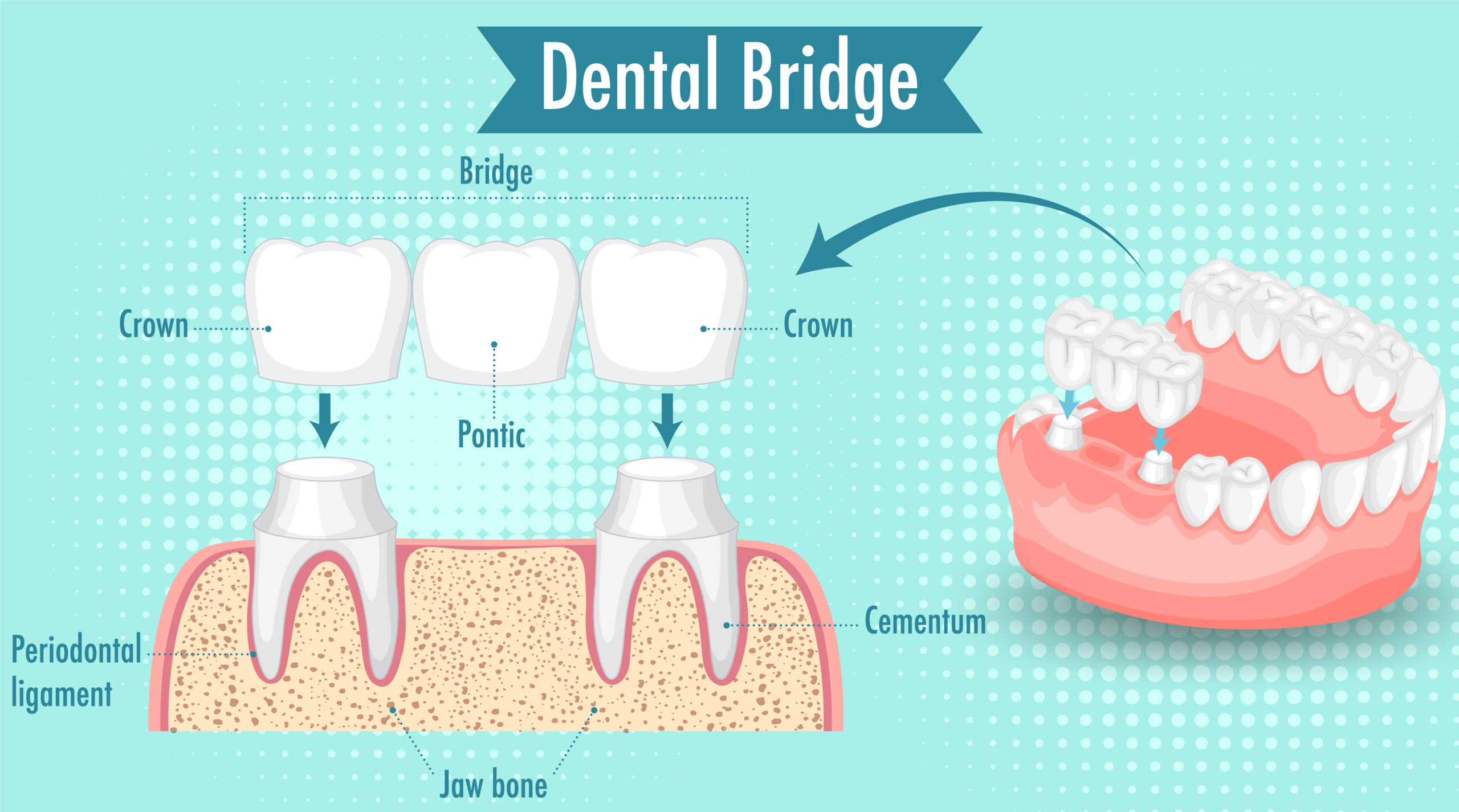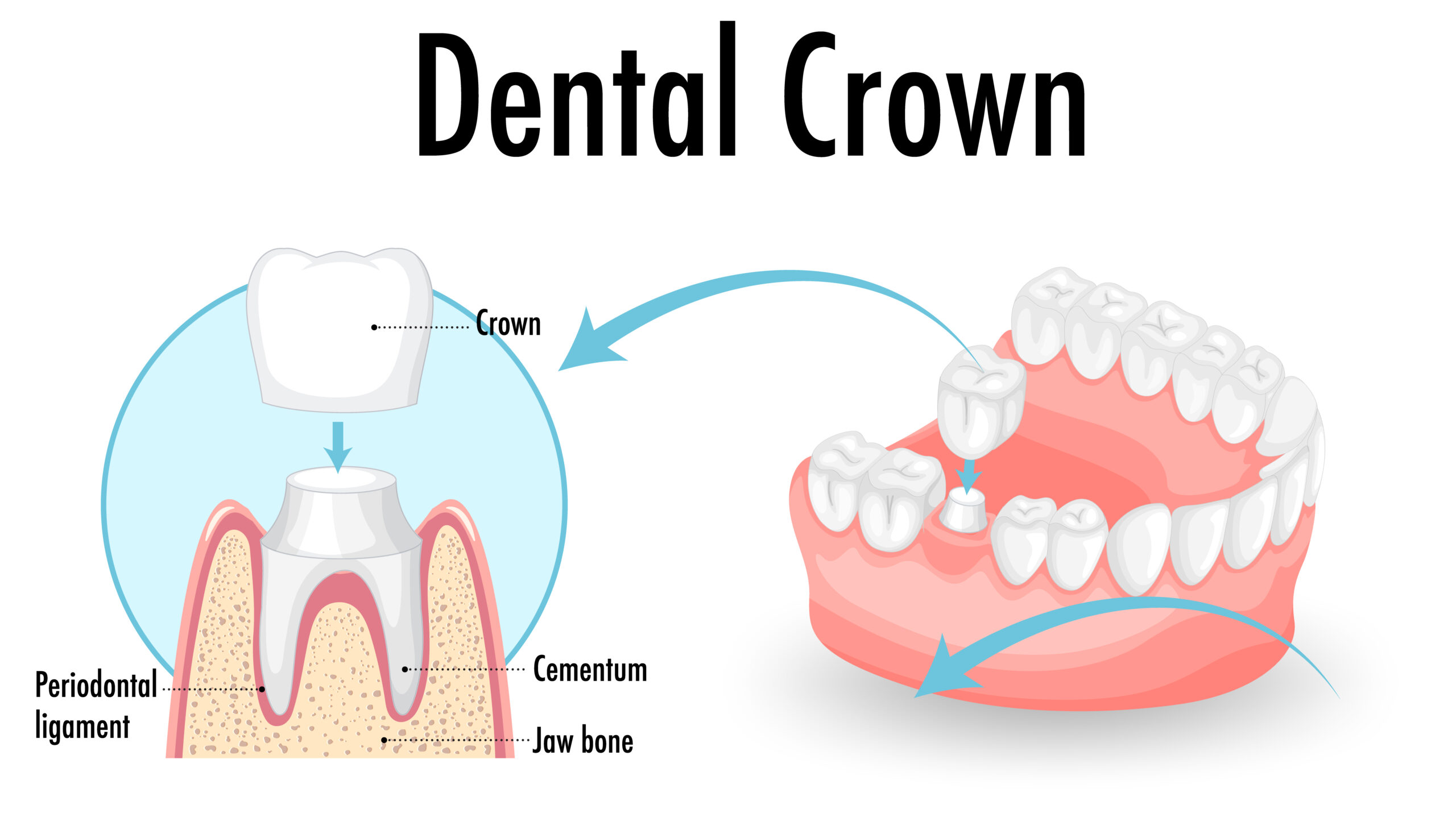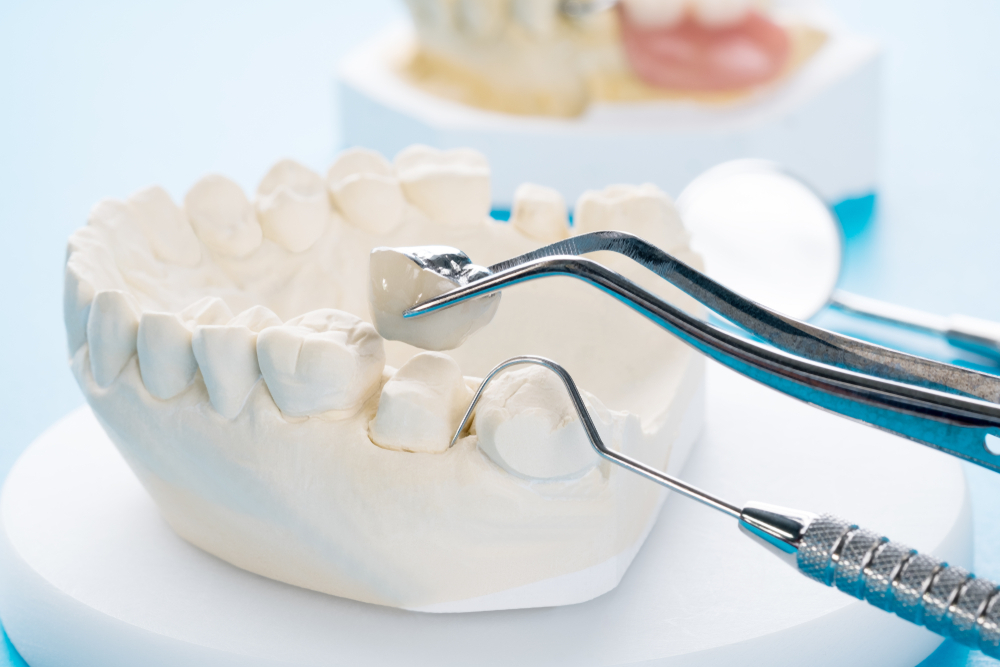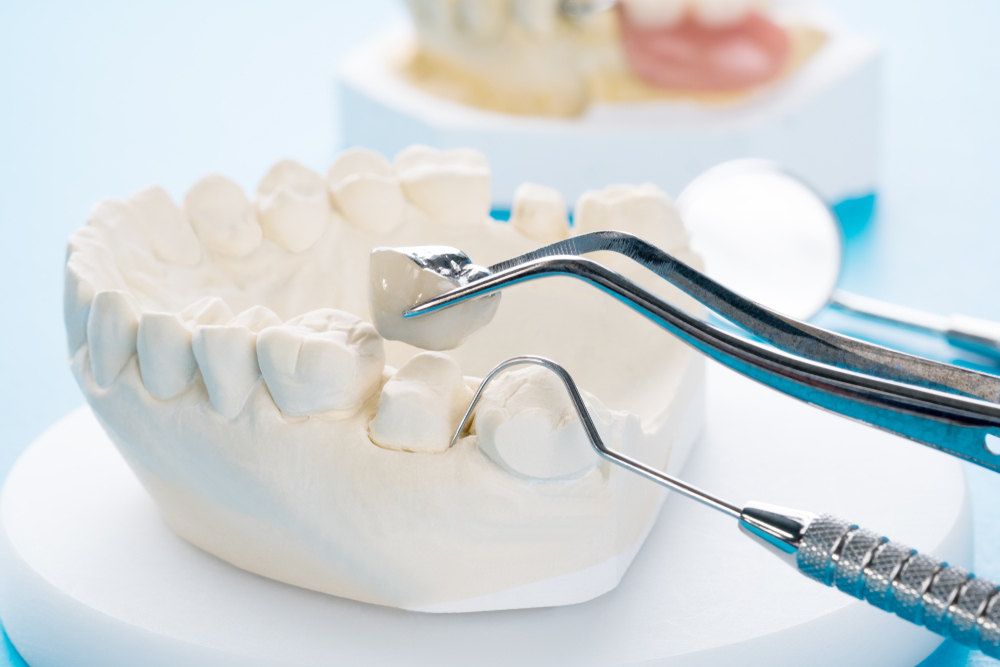


Fun Facts
What are Dental Crowns and Tooth Bridges?
Crowns and bridges are like the superheroes of dentistry – they’re fixed in place! Unlike removable options like dentures, which you can pop out for cleaning, crowns and bridges are securely cemented onto your natural teeth or implants. They’re like steadfast sidekicks, and only your dentist has the power to remove them.
How do Crowns Work?
A dental crown serves as a protective cap for a damaged tooth, offering multiple benefits. Beyond strengthening the tooth, it can enhance its appearance, shape, and alignment. Crowns are also employed to provide a natural tooth-like structure for dental implants. You can even choose porcelain or ceramic crowns that match your natural teeth color. Alternatively, materials like gold and metal alloys, acrylic, and ceramic are available, with the latter being a robust and aesthetically pleasing option. A porcelain crown bonded to a metal shell is often recommended for its combination of strength and attractiveness.
Your dentist might suggest a crown when:
1. A large filling needs replacement due to insufficient remaining tooth structure.
2. A weak tooth requires protection against fractures.
3. A fractured tooth needs restoration.
4. A bridge needs attachment.
5. A dental implant requires covering.
6. A discolored or misshapen tooth needs improvement.
7. A tooth that has undergone root canal treatment needs coverage.
How do Bridges Work?
If you’re missing one or more teeth, your dentist may suggest a bridge as a solution. When teeth are missing, the gaps they leave behind can lead to unwanted shifting or rotation of your remaining teeth, potentially resulting in an improper bite. This imbalance caused by tooth loss can also increase the risk of gum disease and temporomandibular joint (TMJ) disorders.
Bridges are a common method for replacing one or more missing teeth. They are designed to bridge the empty space created by missing teeth. These bridges are firmly attached, either to your natural teeth or dental implants surrounding the gap. These supporting teeth, known as abutments, act as stable anchors for the bridge. The replacement tooth, called a pontic, is connected to the crowns that cap the abutments.
Much like crowns, you have a variety of materials to choose from for your bridges. Your dentist will assist you in selecting the most suitable material based on factors such as the location of the missing tooth (or teeth), its function, aesthetic preferences, and cost considerations. Porcelain or ceramic bridges are also an option, as they can be custom-matched to the color of your natural teeth for a seamless appearance.

How are Crowns and Bridges Made?
Before crafting either a crown or a bridge, it’s necessary to resize the affected tooth or teeth to ensure a proper fit. Following the resizing, your dentist will create a precise mold for the crown or bridge by taking an impression. In cases where porcelain is the chosen material, your dentist will also determine the appropriate shade to match your existing teeth.
Using this impression as a guide, a dental laboratory then proceeds to construct your crown or bridge using the specified material. Meanwhile, a temporary crown or bridge will be placed to protect the resized tooth while the permanent crown or bridge is being fabricated. Once the permanent one is ready, the temporary fixture is removed, and the new crown or bridge is securely affixed to the prepared tooth or teeth using dental cement.
While crowns and bridges can last a lifetime, they do sometimes come loose or fall out. The most important step you can take to ensure the longevity of your crown or bridge is to practice good oral hygiene. A bridge can lose its support if the teeth or bone holding it in place are damaged by dental disease. Keep your gums and teeth healthy by Brushing with fluoride toothpaste twice a day and flossing daily. Also see your dentist and hygienist regularly for checkups and professional cleanings.
To prevent damage to your new crown or bridge, avoid chewing hard foods, ice or other hard objects.

